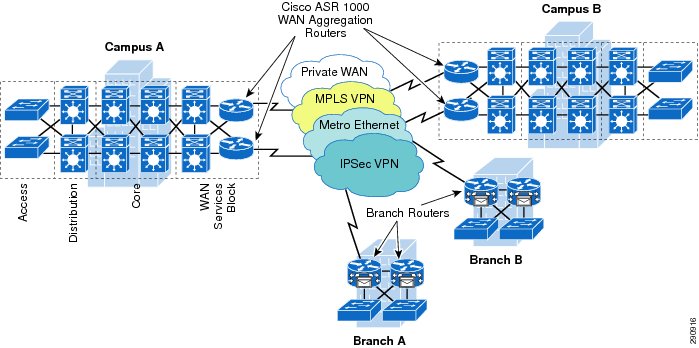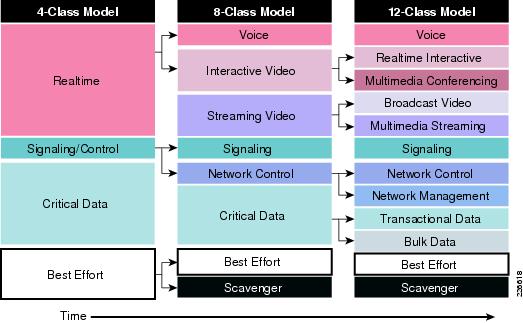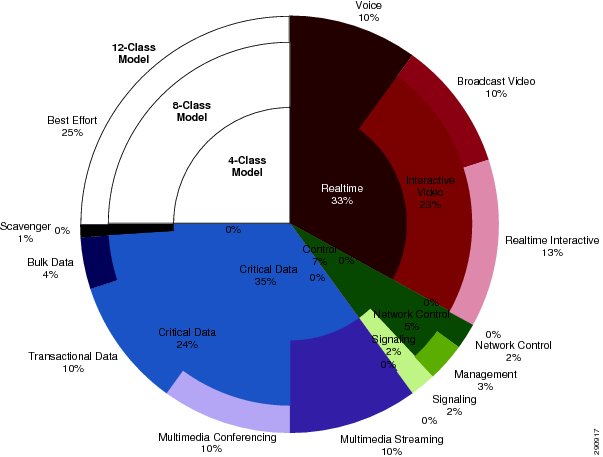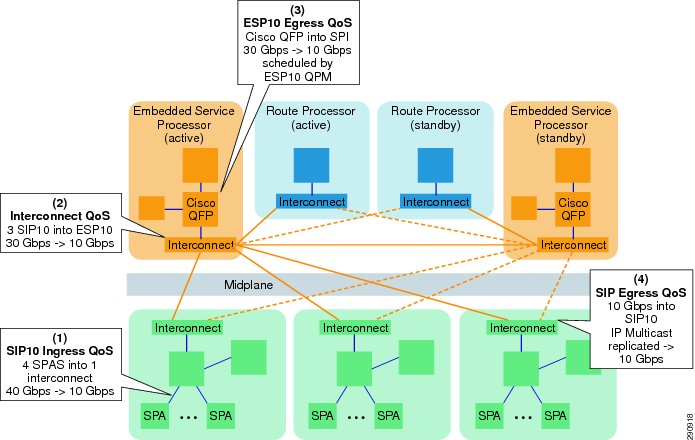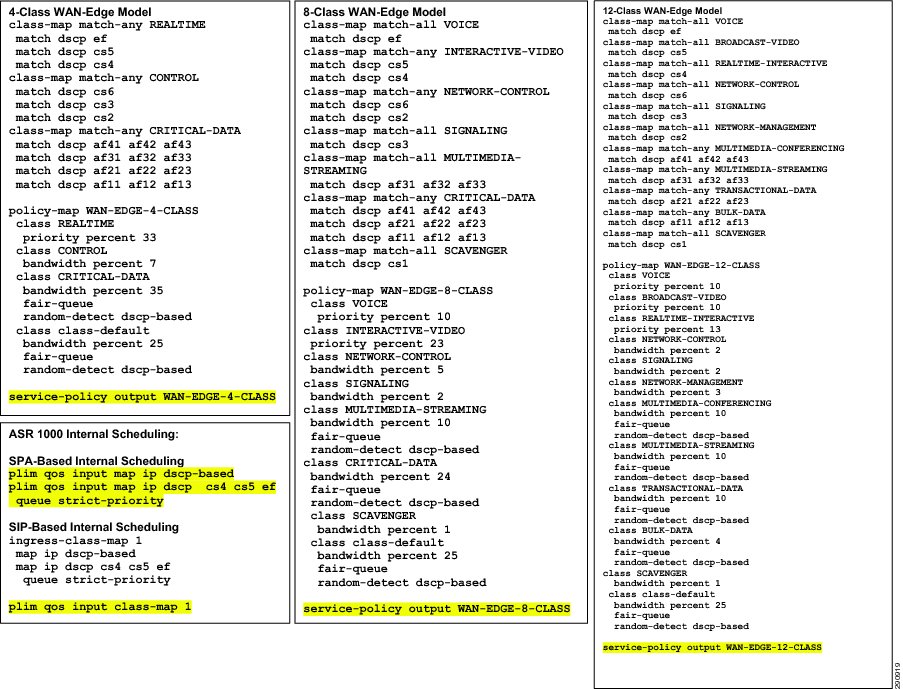Table Of Contents
Medianet WAN Aggregation Cisco ASR 1000 QoS Design
Step 1: Configure WAN/VPN Edge QoS Model(s)
Step 2: Configure Internal Scheduling
Medianet WAN Aggregation Cisco ASR 1000 QoS Design
Role in Medianet WAN Network
The Cisco ASR 1000 routers are well suited to the role of WAN aggregation routers in medianet WAN and VPN networks. As such, these routers may connect campus or large branch networks to private WANs, MPLS VPNs, Metro Ethernet circuits, and/or IPSec-based VPNs, as shown in Figure 1.
Figure 1 Cisco ASR 1000 Routers in Medianet WAN/VPN Networks
QoS Design Steps
There are two main steps to configure QoS on Cisco ASR 1000 series routers:
1.
Configure WAN/VPN edge QoS Model(s):
–
4-Class Model
–
8-Class Model
–
12-Class Model
2.
Configure Internal Scheduling (if required)
–
SPA-based Internal Scheduling
–
SIP-based Internal Scheduling
Step 1: Configure WAN/VPN Edge QoS Model(s)
The number of classes of service provisioned on the WAN/VPN edge is a function of the business priorities of the enterprise. Each class of business-critical applications that has unique service-level requirements needs a dedicated class of service.
While RFC 4594 outlines a 12-class model, Cisco recognizes that not all enterprises are ready to implement such a complex QoS design. Therefore, Cisco recommends a phased approach to media application class expansion, as illustrated in Figure 2.
Figure 2 Medianet Application Class Expansion
Administrators can incrementally implement QoS policies across their medianet WAN/VPN networks in a progressive manner, utilizing such a phased approach to application class expansion to keep in step with their evolving business needs.
DSCP Marking codepoints should remain as consistent as possible as the number of application classes expand. Multiple application classes can be matched on a single codepoint or as a group of several codepoints, with the latter being the preferred option as it facilitates easier expansion.
Not only should marking values remain consistent as the number of classes of service expand, but also relative bandwidth allocations, as shown in Figure 3.
Figure 3 Example Medianet Bandwidth Allocation Models
Additional WAN Edge QoS design recommendations include:
•
Limit LLQ(s) to 33%
•
Provision at least 25% for the Best Effort Queue
•
Limit the Scavenger Queue to 1%
•
Enable Fair-Queuing Pre-Sorters on all classes except control and scavenger classes
•
Expand queue limits as required
•
Enable DSCP-based WRED on all AF classes
•
Optional: Tune DSCP-based WRED:
–
Set min-thresholds to 60% for AFx3
–
Set min-thresholds to 70% for AFx2
–
Set min-thresholds to 80% for AFx1
–
Set all max-thresholds to 100%
Step 2: Configure Internal Scheduling
Due to the hardware architecture of the Cisco ASR 1000, there may be certain circumstances where this platform becomes internally oversubscribed, as shown in Figure 4. However, the Cisco ASR 1000 supports internal scheduling mechanisms to address potential internal oversubscription scenarios.
Figure 4 Cisco ASR 1000 Potential Internal Oversubscription Points
Cisco Validated Design (CVD)
Cisco Validated Designs for Cisco ASR 1000 series routers in the role of a WAN aggregator in a medianet WAN network are presented on the reverse.
Note: Highlighted commands are interface specific; otherwise these are global.For more details, see Medianet WAN Aggregation QoS Design 4.0: http://www.cisco.com/en/US/docs/solutions/Enterprise/WAN_and_MAN/QoS_SRND_40/QoSWAN_40.html.
